 W
WAedes koreicus is a mosquito species originally described from Korea that has been shown to be enzootic to Japan, northeastern China, the Republic of Korea and parts of Russia, but recently found in Belgium, Italy and Germany. Adult Aedes koreicus are relatively large, with areas of white scales on black background, strongly resembling Aedes japonicus, which has also become established outside its native range.
 W
WAeshna walkeri, or Walker's darner, is a species of darner in the dragonfly family Aeshnidae. It is found in Central America and North America.
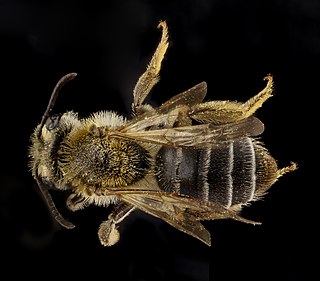 W
WAndrena banksi, the Banks' andrena, is a species of mining bee in the family Andrenidae. It is found in North America.
 W
WAndrena confederata, the southern miner, is a species of mining bee in the family Andrenidae. It is found in North America.
 W
WAnoplolepis nuptialis is a species of ant in the genus Anoplolepis. It is native to South Africa.
 W
WAphaenogaster uinta is a species of ant in the family Formicidae.
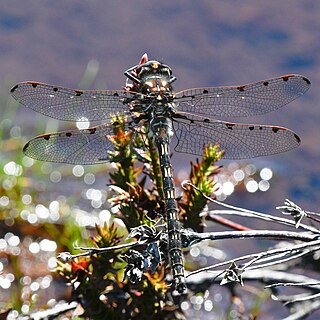 W
WArchipetalia is a monotypic genus of Australian dragonflies in the family Austropetaliidae, The only known species of this genus is Archipetalia auriculata, known as a Tasmanian redspot.
 W
WArchipetalia is a monotypic genus of Australian dragonflies in the family Austropetaliidae, The only known species of this genus is Archipetalia auriculata, known as a Tasmanian redspot.
 W
WAustroaeschna hardyi is a species of large dragonfly in the family Telephlebiidae, known as the lesser Tasmanian darner. It inhabits streams and rivers in Western Tasmania, Australia.
 W
WAustroaeschna speciosa is a species of dragonfly in the family Telephlebiidae, known as the tropical unicorn darner. It is known to be present only in the mountainous regions of north-east Queensland, Australia. It appears very similar to the more widespread Austroaeschna unicornis which inhabits areas in southern Queensland, New South Wales, Victoria and Tasmania.
 W
WAustrogomphus mjobergi, also known as Austrogomphus (Austrogomphus) mjobergi, is a species of dragonfly of the family Gomphidae, commonly known as the pimple-headed hunter. It inhabits rivers and pools across northern Australia.
 W
WAustrogomphus pusillus, also known as Austrogomphus (Austrogomphus) pusillus, is a species of dragonfly of the family Gomphidae, commonly known as the tiny hunter. It is only known from one location, inhabiting a river in the Kimberley region, Western Australia.
 W
WAustrosticta soror is a species of damselfly in the family Isostictidae, commonly known as a Kimberley pondsitter. It is endemic to the Kimberley region in Western Australia, where it inhabits ponds and streams in gorges.
 W
WCordulephya bidens is a species of dragonfly in the family Cordulephyidae, known as the tropical shutwing. It inhabits rainforest streams in northern Queensland, Australia.
 W
WCordulephya divergens is a species of dragonfly of the family Cordulephyidae, commonly known as the clubbed shutwing. It inhabits streams in the Sydney Basin, Australia.
 W
WElattoneura tetrica, black and yellow bambootail is a damselfly species in the family Platycnemididae. It is endemic to Western Ghats in India.
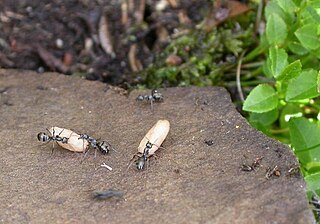 W
WFormica lemani is an ant species that is similar to Formica fusca. The species was not formally distinguished as being different from Formica fusca until 1917, and was not clearly described until 1954.
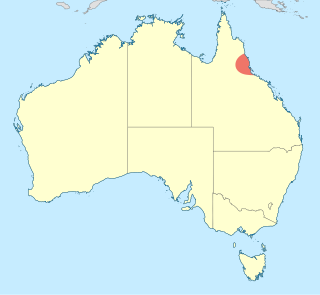 W
WGriseargiolestes metallicus is a species of Australian damselfly in the family Megapodagrionidae, commonly known as a metallic flatwing. It has only been recorded from rainforests in the vicinity of Tully Gorge National Park in northern Queensland, where it inhabits streams.
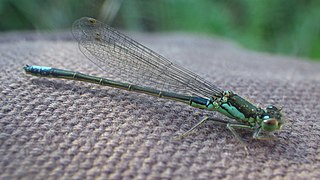 W
WIschnura gemina is a species of damselfly in the family Coenagrionidae known by the common name San Francisco forktail. It is endemic to the San Francisco Bay Area in California in the United States. This uncommon insect has a total range of less than 500 square miles in the Bay Area, occurring only in greater San Francisco and parts of San Mateo and Marin Counties. This species is "one of the rarest Odonates in the United States."
 W
WLaphria macquarti is a species of robber flies in the family Asilidae.
 W
WLasius arizonicus is a species of ant belonging to the genus Lasius, formerly a part of the genus Acanthomyops. Described in 1917 by Wheeler, the species is native to the United States.
 W
WLasius californicus is a species of ant belonging to the genus Lasius, and was formerly a part of the genus Acanthomyops. Described in 1917 by Wheeler, the species is native to the United States.
 W
WLeptothorax crassipilis is a species of ant in the family Formicidae.
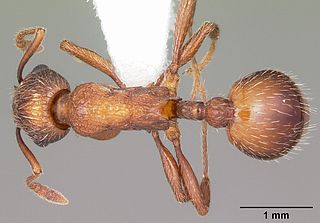 W
WMyrmica brevispinosa is a species of ant in the family Formicidae. They can be found in the U.S.A. and Canada.
 W
WNeosticta silvarum is a species of damselfly in the family Isostictidae, commonly known as a forest pinfly. It is endemic to tropical north-eastern Queensland, Australia, where it inhabits streams in rainforest.
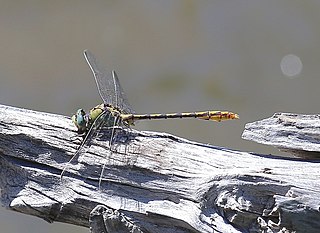 W
WOphiogomphus arizonicus, the Arizona snaketail, is a species of clubtail in the family of dragonflies known as Gomphidae. It is found in North America.
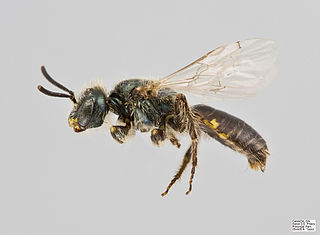 W
WThe Bequaert's miner bee is a species of miner bee in the family Andrenidae. Another common name for this species is the Bequaert's perdita. It is found in North America.
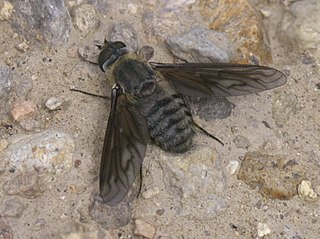 W
WPoecilanthrax californicus is a species of bee flies.
 W
WPseudomops septentrionalis, the pale bordered field cockroach or firefly roach, is a species of cockroach in the family Ectobiidae. It is found in Central America and North America.
 W
WPyrgomantis pallida is a species of praying mantis found in Burkina Faso, Ghana, Guinea, Cameroon, Congo, Nigeria, and Togo.
 W
WPyrgomantis rhodesica is a species of praying mantis found in Botswana, Namibia, Transvaal, Zambia, and Zimbabwe.
 W
WSynlestes selysi is a species of Australian damselfly in the family Synlestidae, commonly known as a forest needle. It is endemic to eastern New South Wales and eastern Queensland, where it inhabits streams.
 W
WSynlestes tropicus is a species of Australian damselfly in the family Synlestidae, commonly known as a tropical needle. It is endemic to north-eastern Queensland, where it inhabits streams in rainforests.
 W
WSynthemiopsis gomphomacromioides, also known as the Tasmanian spotwing, is a species of dragonfly from southern and north-western Tasmania, Australia. It is the only species in the genus Synthemiopsis and has also been placed in its own tribe, Synthemiopsini. R. J. Tillyard, who first described it, considered it intermediate between the Australian genus Synthemis and the Chilean Gomphomacromia. He had material from swamps around Cradle Mountain, at about 4,000 feet (1,200 m) altitude, and from Flowerdale Creek near Wynyard. Synthemiopsis gomphomacromioides flies rapidly over the swamps and often sits on reeds. It occurs together with Synthemis tasmanica, a similar but duller-coloured species.
 W
WSynthemiopsis gomphomacromioides, also known as the Tasmanian spotwing, is a species of dragonfly from southern and north-western Tasmania, Australia. It is the only species in the genus Synthemiopsis and has also been placed in its own tribe, Synthemiopsini. R. J. Tillyard, who first described it, considered it intermediate between the Australian genus Synthemis and the Chilean Gomphomacromia. He had material from swamps around Cradle Mountain, at about 4,000 feet (1,200 m) altitude, and from Flowerdale Creek near Wynyard. Synthemiopsis gomphomacromioides flies rapidly over the swamps and often sits on reeds. It occurs together with Synthemis tasmanica, a similar but duller-coloured species.
 W
WTelephlebia tryoni is a species of dragonfly in the family Telephlebiidae, known as the coastal evening darner. It is a medium to large, dark chestnut brown dragonfly with dark markings on the leading edge and base of its wings. It is endemic to eastern Australia, where it has been found along streams in rainforests and open areas, and flies at dusk.